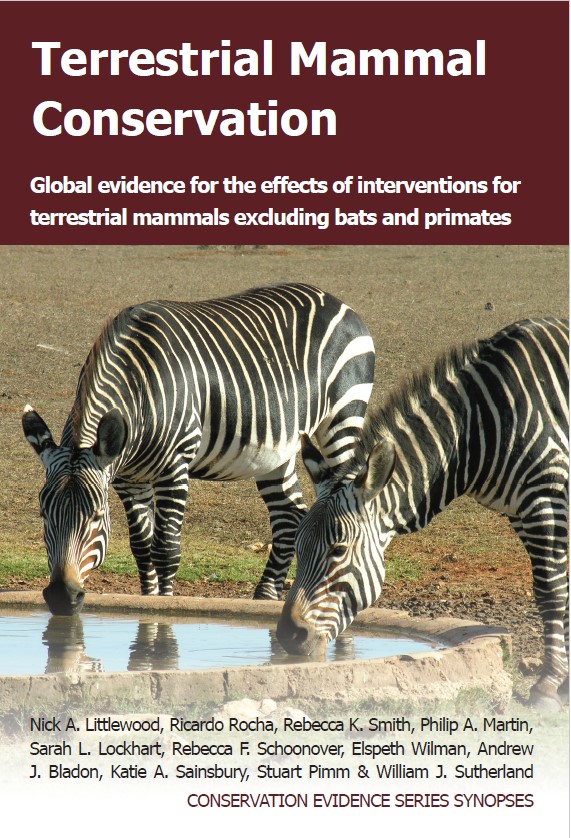Manage vegetation using grazing by wild herbivores
-
Overall effectiveness category Unknown effectiveness (limited evidence)
-
Number of studies: 2
View assessment score
Hide assessment score
How is the evidence assessed?
-
Effectiveness
43% -
Certainty
30% -
Harms
0%
Study locations
Supporting evidence from individual studies
A site comparison study in 1998–1999 at a forest site in Tennessee, USA (Weickert et al. 2001) found that in areas grazed by high numbers of wild herbivores, of three species, there were more small mammals than in areas grazed by fewer wild herbivores with just one species present. More small mammals were caught in areas with high wild herbivore abundance (145 small mammals) than in areas with low wild herbivore abundance (96 small mammals). Numbers caught in areas with high and low herbivore abundance were: white-footed mouse Peromyscus leucopus (130 vs 69), northern short-tailed shrew Blarina brevicauda (8 vs 22), woodland vole Microtus pinetorum (2 vs 5), golden mouse Ochrotomys nuttalli (4 vs 0), southern flying squirrel Glaucomys volans (1 vs 0) (species-level results were not statistically tested). Small mammals were surveyed at six plots inside a 324-ha enclosure, where elk Cervus canadensis and bison Bison bison were released in 1994, and six plots outside the enclosure, where no elk or bison occurred. White-tailed deer Odocoileus virginianus occurred both inside and outside the enclosure. Herbivore density was 46/km2 inside the enclosure and 6–10/km2 outside the enclosure. Small mammals were sampled 13 times at each plot, from June 1998 to May 1999, using 15 Sherman live traps, along a 100-m transect, for three nights each time.
Study and other actions testedA study in 1987–2009 in a shrubland protected area in Western Cape, South Africa (Watson et al. 2011) found that following the introduction of Cape mountain zebras Equus zebra zebra to manage vegetation and facilitate improved grazing for bontebok Damaliscus pygargus pygargus, numbers of bontebok did not increase. Twenty-two years after Cape mountain zebras were introduced, bontebok numbers were approximately one-third lower (187) than at the time of zebra introduction (298). Authors suggest that zebras and bonteboks may compete for similar resources. In 1987–1990, twelve Cape mountain zebras were translocated into a 3,435-ha national park. Between 1987–1990 and 2009, zebra numbers increased from 12 to 48 individuals. Population monitoring details for bonteboks and zebras are not provided.
Study and other actions tested
Where has this evidence come from?
List of journals searched by synopsis
All the journals searched for all synopses
This Action forms part of the Action Synopsis:
Terrestrial Mammal Conservation
Terrestrial Mammal Conservation - Published 2020
Terrestrial Mammal Conservation





)_2023.JPG)














